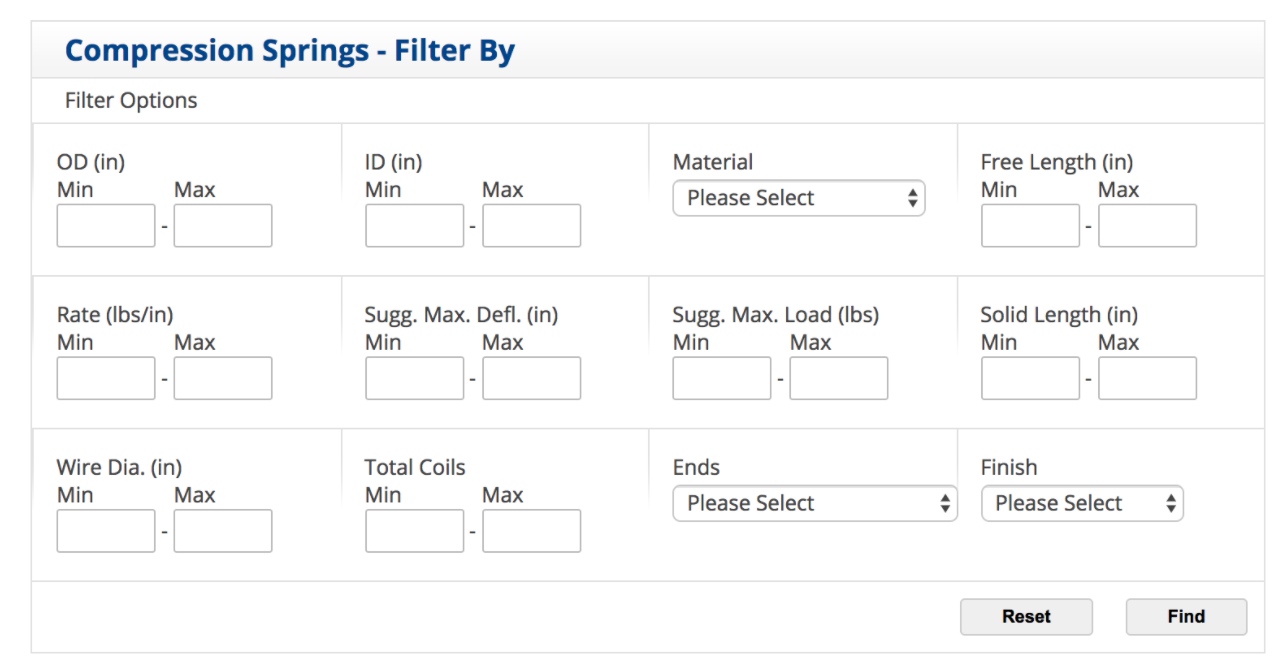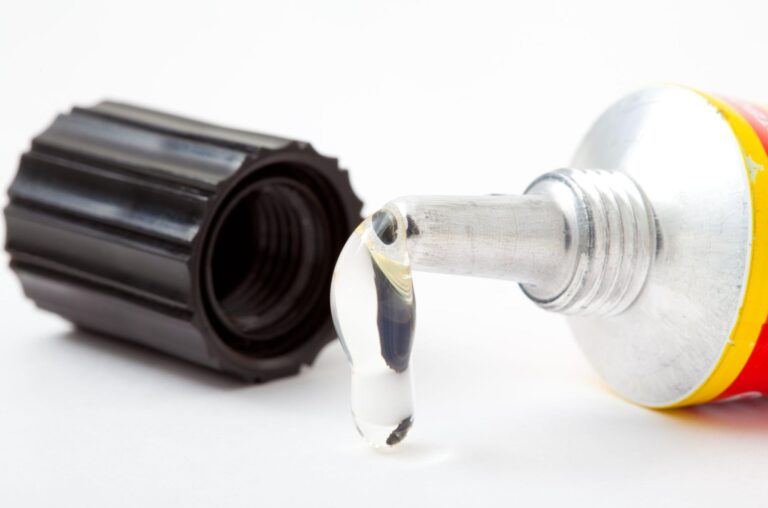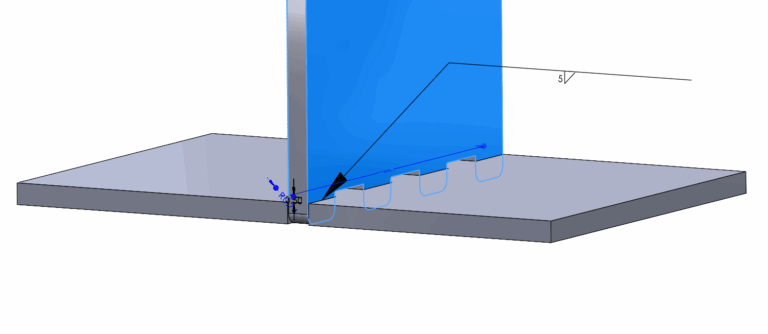Time to read: 5 min
Springs are absolutely everywhere, from jewelry clasps to large industrial robots. The probability of a fresh-out-of-school mechanical engineer encountering his or her first spring design problem within the first year of graduating is not 100%, but it’s pretty high.
Most of the time, it’s not practical to go straight into making a custom spring in the prototyping stage. We recommend an approach that starts with requirement gathering, finding the closest stock spring that will do, and finally, creating a custom spring in production. Read on for considerations at each stage of this approach.
Load condition
Identifying load condition is the starting point of every spring application problem. There are four main considerations.
-
Type of load: is it compression, extension, or torsion?
All springs, regardless of whether they are coiled or flat, work in one of these three ways. However, there’s some flexibility as to which type you should use. We’ve seen compression and extension springs work in situations where a torsion spring might be the more obvious choice. For example, X-box controllers use torsion springs for springback in trigger buttons, but the newest Nintendo Switch Joycons use two compression springs instead. -
Maximum deflection (travel)
Knowing the maximum deflection narrows down spring choice geometrically.-
In compression springs, the maximum deflection must be less than the difference between the spring’s free length (uncompressed) and its solid length (fully compressed). One must pre-load the spring so its initial position is shorter than the free length.
-
Extension springs are rated with a maximum operating length, after which the spring is at risk of permanent deformation. The maximum travel must be lower than the difference between the extension spring’s solid length (unextended) and its maximum safe operating length. One must pre-load the spring, so that the spring is longer than its solid length when installed.
-
-
Maximum load, or desired response
Sometimes, we’re given a load that the spring must withstand, without being fully compressed or extended to unsafe lengths, such as selecting springs for a trampoline.
Other times, we’re choosing a spring based on how it feels to the user, such as picking a torsion spring for a clip. Knowing the load or response helps us determine spring rate. -
Desired response: constant rate, constant force, or variable rate?
This determines what type of spring we will use: a constant diameter cylindrical coil extension spring vs. a clock spring.
Material considerations
Choosing a material for your spring is dependent on load condition and operating environment.
In coil springs, we care most about the material’s modulus of rigidity or shear modulus (G), whereas in flat springs, modulus of elasticity or Young’s modulus (E) matter more. These properties affect spring rate.
High cyclical frequency applications demand materials with good fatigue resistance, such as music wire. When load is intermittent, lower cost options such as hard drawn steel wire are acceptable. Efunda has a calculator for predicting whether a certain spring will fail from fatigue.
Operating environment has a huge influence on spring material selection. The temperature, humidity, and corrosive nature of the environment can limit material choice. As expected, Stainless Steel wires such as 304 and 17-4PH have great corrosion resistance, but hard-drawn steel wire does not. However, surface treatments can also improve corrosion resistance, and that may be a more economical option than using a higher cost material in larger sized springs.
Every metal has a maximum operating temperature rating. Most steel wires can’t be used in temperatures elevated above 300°F—that’s where exotics metals such as Inconel come in.
We find a fair amount of spring contacts in electrical applications. Beryllium copper tends to be used in these applications, due to its excellent electrical conductivity. However, they are not meant to be cyclically loaded.
For a fairly comprehensive list of common spring materials, check out the material tables on Springipedia (sponsored by Lee Spring, a major stock and custom spring supplier).
Mounting requirements
Every type of spring, whether it’s extension, compression, torsion or otherwise, are available in a variety of end conditions.
Compression springs have four basic types of ends. Open, unground ends are the lowest cost, but ground ends are better for stability.
Extension springs tend to have hooks or eyes formed on both ends, but hooks can also be made from a different material and attached. See Springipedia’s diagrams for fifteen different styles. Full-loop, half-loop, and end hook over center styles are the most common off-the-shelf end conditions.
Torsion springs’ end conditions are based on the length of the legs and the angle between them. Here are illustrations of basic types.
Stock springs come in just the most popular configurations, but if parts that mate with the spring are custom, then you still have a lot flexibility. Spring suppliers easily offer custom end conditions at volume.
Choosing a stock spring for prototyping
Major stock spring suppliers, like Lee Spring, Century Spring, and The Spring Store have lookup tools for their catalogues. You can usually search by geometry, by load condition, and by materials. I like to filter by maximum deflection and maximum load first, because those tend to be less negotiable.

From Prototyping to Production
Spring manufacturing is a lot like CNC milling or CNC turning. For helical coil spring production, a spring supplier takes geometric requirements, such as wire diameter, mean coil diameter, number of coils, and end conditions, turns all this into a program for a CNC wireform machine, and then your spring gets coiled and heat treated. Most spring suppliers can also design the spring given just the critical requirements.
Similar to other types of CNC machining, the setup cost is high, while unit production cost is low; that’s why an economic order quantity starts at several hundred units.
Therefore, during prototyping, engineers typically choose stock springs that closely match their needs and then fine-tune a custom design for mass production. This way, you get exactly the end conditions, spring rate, and tolerances that you need.
Here are four ways to tune an off-the-shelf helical coil spring’s spring rate (k), the amount of weight needed to compress a spring one inch:

One must be careful with the ratio of wire diameter and mean coil diameter. This ratio, d/D is referred to as “spring index”. The smaller the spring index, the harder it is to manufacture the spring, and the unit cost will increase accordingly. A spring index between five and ten makes an easy, economical spring.
Main Takeaways
When your design calls for springs, identify load conditions first. In prototyping, it’s best to start with off-the-shelf springs. Use maximum deflection and maximum load as a starting point to filter for springs in stock spring catalogues, then narrow the choice down using spring rate or other geometric constraints. When you are ready to go into production, work with a spring supplier to fine tune the design to your exact specifications.










